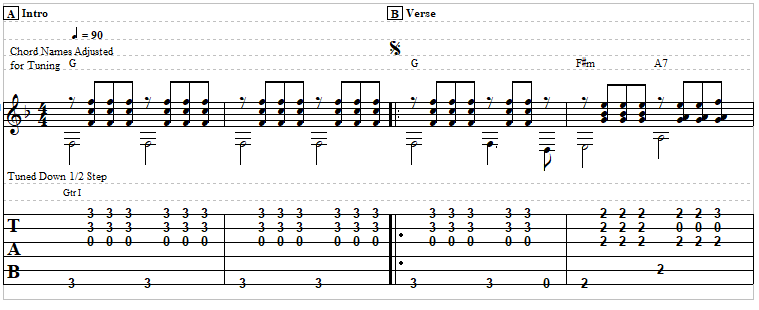
Click here for the full song study.
Although credited to “Lennon–McCartney”, the song was written solely by Paul McCartney. It remains popular today with more than 2,000 cover versions and is one of the most covered songs in the history of recorded music. On this page, you can download the full guitar tab for the song, print out a strumming version using only chords/lyrics, or watch a video that shows you how to play it.
Yesterday Guitar Tab Download
Download the complete Yesterday guitar tab at the link below:
Strumming Version Of Yesterday
Click anywhere on the chords/lyrics below to open up a printable version:
Composition
“Yesterday” features McCartney playing an Epiphone Texan steel-string acoustic guitar. It has two contrasting sections, differing in melody and rhythm.
The first section (“Yesterday, all my troubles seemed so far away…”) opens with an F chord (the 3rd of the chord is omitted), then moves to Em7 before resolving to A7 and then to D-minor. In this sense, the opening chord is a decoy; as musicologist Alan Pollack points out, the home key (F-major) has little time to establish itself before “heading towards the relative D-minor.” He points out that this diversion is a compositional device commonly used by Lennon and McCartney, which he describes as “delayed gratification”.
The second section (“Why she had to go I don’t know…”) is, according to Pollack, less musically surprising on paper than it sounds. Starting with Em7, the harmonic progression quickly moves through the A-major, D-minor, and (closer to F-major) B♭, before resolving back to F-major, and at the end of this, McCartney holds F while the strings descend to resolve to the home key to introduce the restatement of the first section, before a brief hummed closing phrase.
The tonic key of the song is F major (although, since McCartney tuned his guitar down a whole step, he was playing the chords as if it were in G), where the song begins before veering off into the key of D minor. It is this frequent use of the minor, and the ii-V7 chord progression (Em and A7 chords in this case) leading into it, that gives the song its melancholy aura. The A7 chord is an example of a secondary dominant, specifically a V/vi chord. The G7 chord in the bridge is another secondary dominant, in this case, a V/V chord, but rather than resolve it to the expected chord, as with the A7 to Dm in the verse, McCartney instead follows it with the IV chord, a B♭. This motion creates a descending chromatic line of C–B–B♭–A to accompany the title lyric.
